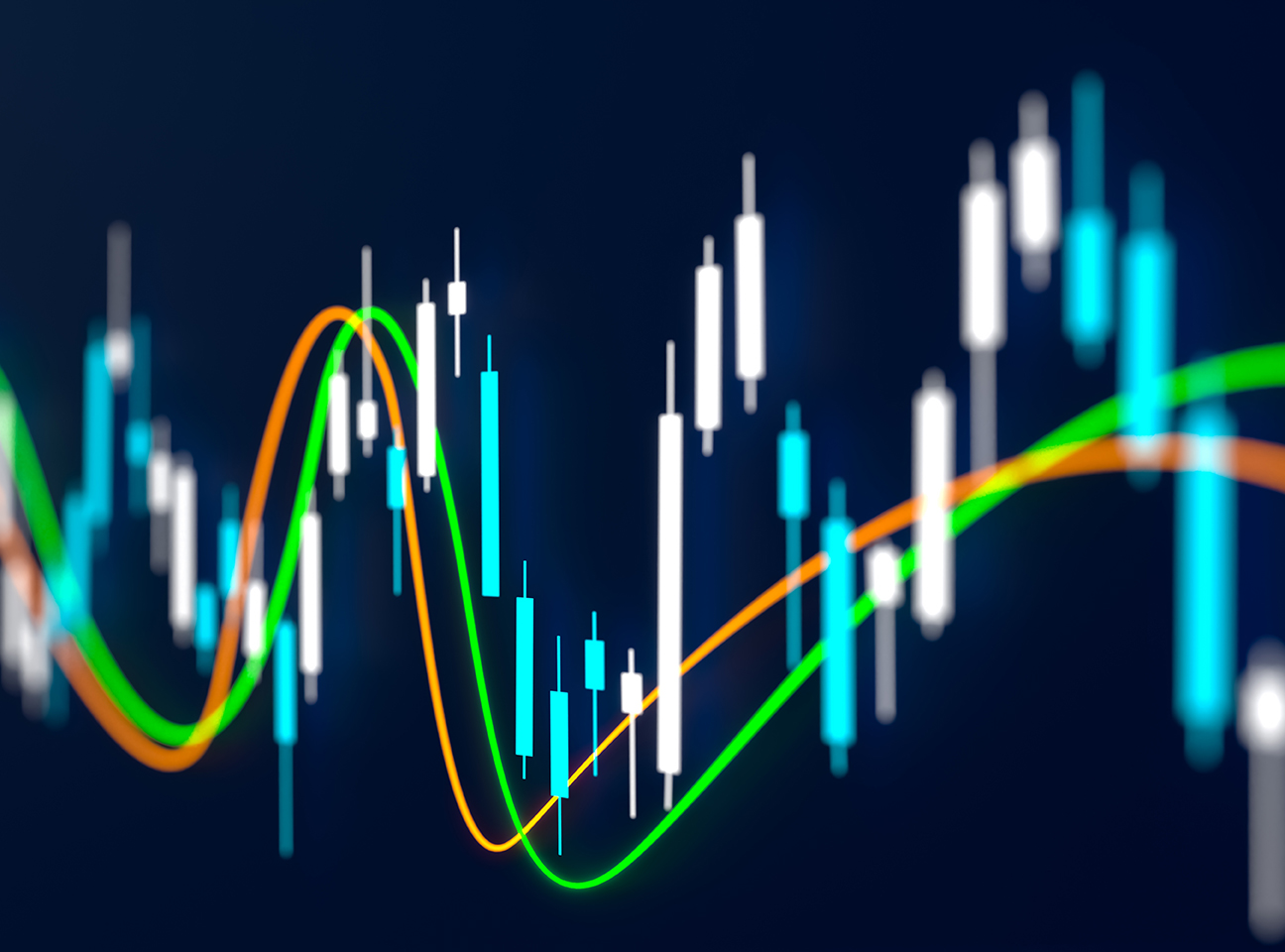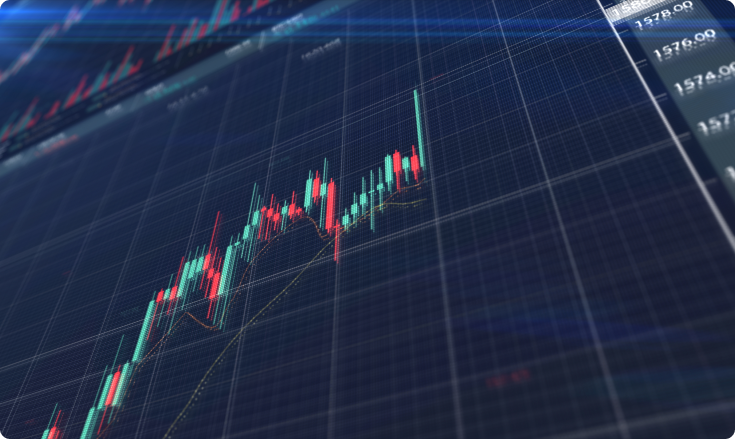Risk Management Strategy

When a trader makes an investment decision, he gets exposed to a number of financial risks. The quantum of such risks depends on many factors, one of which is the type of trading instrument. Other common risk factors come in the form of high inflation, volatility in capital markets, recession, the bankruptcy of a company, etc.
In the world of trading, risk management refers to the practice of identifying potential risks in advance, analyzing them, and taking precautionary steps to reduce the risk. Its main purpose is to mitigate the risks of losses in an investment.
The risk of loss arises when the market moves in the opposite direction of our expectations. Many factors can have an effect on market movement. These factors are primarily political events such as elections, economic events such as interest rate decisions, or business events such as new technologies.
How Does Risk Management Work?
Trading is tempting. On a daily basis, it seems like there are plenty of good trading opportunities that can potentially give you large profits quickly, just by investing significant amounts in single positions. However, most traders soon realize that it’s not a sustainable approach, and after a couple of trades, a single loss can wipe out their entire portfolio.
Implementing a well-designed and detailed risk management strategy will allow you to remain profitable in the long run and create a steady source of income which can be augmented over time.
Risk is the probability of the actual return on investment (ROI) deviating from the expected return. The deviations occur due to the events during a trade and vary in direction and magnitude. A favorable event may lead to a positive deviation, making you more-than-expected profits. Unfavorable events can cause negative deviation, which can mean earning less-than-expected, breaking-even, or incurring a loss. Each market-influencing event factor affects the trading volume in terms of position frequency, size, and direction – creating a variance in the intensity and speed of price fluctuations. This is called volatility.
Your financial capacity and psychological resilience to endure high volatility determines your risk tolerance. The higher your risk tolerance is, the higher return potential you will have.
Successful traders know and accept that trading is a complex process and an extensive risk management strategy and trading plan allow us to have a sustainable income source. A trader who has generated substantial profits can lose it all in just one or two bad trades without a proper trading plan and a risk management strategy.
Trading plan and risk management
Experienced traders commonly quote the phrase: "Plan the trade and trade the plan.” A good trading plan outline should answer most, if not all of the following questions:
- Which financial instruments to focus on?
- When to enter and to exit trades?
- Where to set profit and loss limits?
- How to determine useful or useless opportunities?
- What to do when the markets turn against you?
- How to deal with your emotions in relation to trading?
- What precautions to take to ensure you will stick to this plan?
Risk Management Steps
There are two types of risks in finance: systematic risk and systemic risk.
Systematic risk is the risk inherent in a particular financial asset or even an entire market or industry. This inherent risk is external and beyond the control of any individual or entity. Systematic risk is non-diversifiable, and all financial investments are subject to it. This means that having a diversified portfolio does not mitigate or eliminate systematic risk. Systematic risk includes market risk, interest rate risk, inflation risk, and exchange rate risk.
Systemic risks, on the other hand, are unconventional. They are harder to assess in terms of their likelihood to occur or even their eventual scope of impact, something like a black swan. To understand systemic risk, consider a well-working web of financial systems. The systemic risk then occurs when there is a breakdown of any single important node, which then triggers a never-ending negative spiral that not only exposes the weaknesses of the system but also accelerates its breakdown.
The process of managing risks consists of two important steps: identification and mitigation.
Identification
Identifying investment risks requires knowledge of the different variables that are in play. Primary economic factors such as interest rate decisions and trade wars usually have a market-wide effect on all industries. Secondary economic factors like economic reports affect the investor and consumer confidence and shift the short- and medium-term trends. Tertiary economic factors like quarterly earnings reports inform about specific industries or financial assets. Although the range of impact is limited, they can cause massive movements in the target assets.
The range of information is definitely wide, but not all of it is necessarily relevant to all types of assets. In your trading plan, you should first identify which economic events are the most relevant ones and can affect the assets in question. Then, you should note their characteristics in terms of power to fluctuate prices, the frequency they are published, and the factors which can affect the numbers in these reports. Establishing the scope of information to monitor would allow you to eliminate the noise and focus on the relevant news. Next, you should describe the probable scenarios for each report and whether they would have beneficial or negative effects on your investment.
Distinguishing the risky scenarios will allow you to select the related signals in the markets and prepare for any troubles our portfolio may face.
Mitigation
As we can see, there is no way to avoid risk in trading. However, once you’ve learned and managed to identify potential risks, you can then more easily find a way to reduce those risks.
Here we will write in more details about the risk mitigation strategies that can protect your capital.
2.1 Setting Stop-Loss and Take-Profit Points
Stop-loss (S/L) and take-profit (T/P) points represent two key ways in which traders can plan ahead when trading. Traders should always know when they plan to enter or exit a trade before they execute. Setting stop-loss and take-profit points is often done using technical analysis, but fundamental analysis can also play a key role in timing. For example, if a trader is holding a stock ahead of earnings as excitement builds, they may want to sell before the news hits the market if expectations have become too high, regardless of whether the take-profit price has been hit.
Successful traders know what price they are willing to pay and at what price they are willing to sell. They can then measure the resulting returns against the probability of the stock hitting their goals. If the adjusted return is high enough, they execute the trade. A stop-loss point is the price at which a trader will sell a stock and take a loss on the trade. This often happens when a trade does not pan out the way a trader hoped. The points are designed to prevent the "it will come back" mentality and limit losses before they escalate. For example, if a stock breaks below a key support level, traders often sell as soon as possible.
On the other hand, a take-profit point is the price at which a trader will sell a stock and take a profit on the trade. This is when the additional upside is limited given the risks. For example, if a stock is approaching a key resistance level after a large move upward, traders may want to sell before a period of consolidation takes place.
Conversely, unsuccessful traders often enter a trade without having any idea of the points at which they will sell at a profit or a loss. They are more like gamblers, with losses provoking them to hold on and hope to make their money back, while profits enticing traders to imprudently hold on for even more gains.
By using stop losses effectively, a trader can minimize not only losses but also the number of times a trade is exited needlessly.
a) Moving averages represent the most popular way to set these points, as they are easy to calculate and widely tracked by the market. Key moving averages include the 5-, 9-, 20-, 50-, 100- and 200-day averages. These are best set by applying them to a stock's chart and determining whether the stock price has reacted to them in the past as either a support or resistance level.
b) Another great way to place stop-loss or take-profit levels is on support or resistance trend lines. These can be drawn by connecting previous highs or lows that occurred on significant, above-average volume. Like with moving averages, the key is determining levels at which the price reacts to the trend lines and, of course, on high volume.
When setting these points, here are some key considerations:
- Use longer-term moving averages for more volatile stocks to reduce the chance that a meaningless price swing will trigger a stop-loss order to be executed.
- Adjust the moving averages to match target price ranges. For example, longer targets should use larger moving averages to reduce the number of signals generated.
- Stop losses should not be closer than 1.5-times the current high-to-low range (volatility), as it is too likely to get executed without reason.
- Adjust the stop loss according to the market's volatility. If the stock price isn't moving too much, then the stop-loss points can be tightened.
- Use known fundamental events such as earnings releases, as key time periods to be in or out of a trade as volatility and uncertainty can rise.
2.2 The One-Percent Rule
A lot of day traders follow what's called the one-percent rule. Basically, this rule of thumb suggests that you should never put more than 1% of your capital or your trading account into a single trade. So if you have $10,000 in your trading account, your position in any given instrument shouldn't be more than $100.
This strategy is common for traders who have accounts of less than $100,000—some even go as high as 2% if they can afford it. Many traders whose accounts have higher balances may choose to go with a lower percentage. That's because as the size of your account increases, so too does the position. The best way to keep your losses in check is to keep the rule below 2%—any more and you'll be risking a substantial amount of your trading account.
2.3 Calculating Expected Return
Setting stop-loss and take-profit points are also necessary to calculate the expected return. The importance of this calculation cannot be overstated, as it forces traders to think through their trades and rationalize them. As well, it gives them a systematic way to compare various trades and select only the most profitable ones.
This can be calculated using the following formula:
[(Probability of Gain) x (Take Profit % Gain)] + [(Probability of Loss) x (Stop-Loss % Loss)]
The result of this calculation is an expected return for the active trader, who will then measure it against other opportunities to determine which stocks to trade. The probability of gain or loss can be calculated by using historical breakouts and breakdowns from the support or resistance levels—or for experienced traders, by making an educated guess.
2.4 Diversify and Hedge
Making sure you make the most of your trading means never putting your eggs in one basket. If you put all your money in one stock or one instrument, you're setting yourself up for a big loss. So remember to diversify your investments—across both industry sectors as well as market capitalization and geographic region. Not only does this help you manage your risk, but it also opens you up to more opportunities.
You may also find yourself at a time when you need to hedge your position. Consider a stock position when the results are due. You may consider taking the opposite position through options, which can help protect your position. When trading activity subsides, you can then unwind the hedge.
Conclusion
Every single trade could, theoretically at least, end up a loser. In fact, a successful trader can lose money on trades more often than they make money—but still end up ahead in the long run if the size of their gains on winning trades far exceeds the losses on their losers. Another trader can make money on a majority of their trades, and still lose money over time by taking small gains on their winners and letting losing trades run too long.
The risk accompanying each trade can not be completely and 100% avoided, but by using these strategies, it will definitely be lowered, and its effect cushioned.
Sources Consulted:
1. Kueper, J. Risk Management Techniques for Active Traders https://www.investopedia.com/articles/trading/09/risk-management.asp
(2021)
2. Horton, M. Common Risk Management Strategies for Traders https://www.investopedia.com/ask/answers/050715/what-are-some-examples-risk-management-techniques.asp (2022)
3. Thakar, C. Introduction to Risk Management in Trading https://blog.quantinsti.com/trading-risk-management/ (2020)
LimitPrime © 2025
Begin to invest and
start earning today!
Categories
Do you need personalized assistance?
READ MORE INTERESTING ARTICLES

In the world of financial markets, traders are often on the lookout for reliable indicators to help their decision-making process when...
Read More
What Is Moving Average Convergence/Divergence (MACD)? Even under ideal circumstances, learning to trade in the right direction of marke...
Read More
A hedge is a measure taken to reduce the risk of volatile price movements in an asset. A hedge is an investment that consists in taking...
Read More